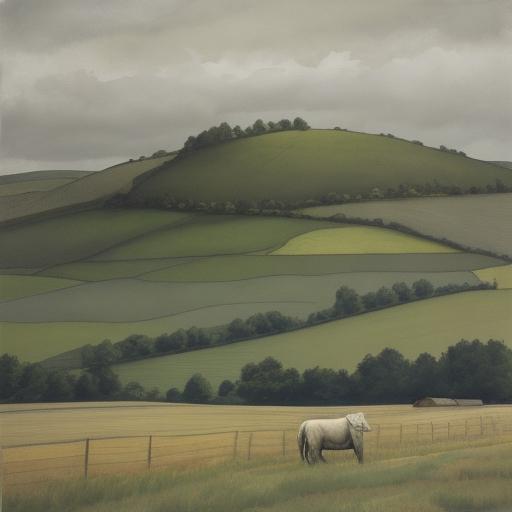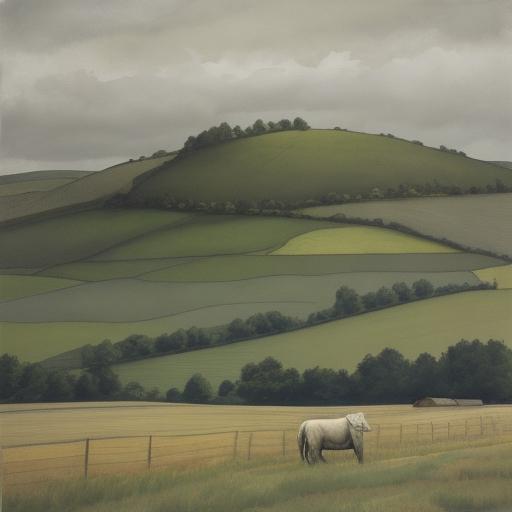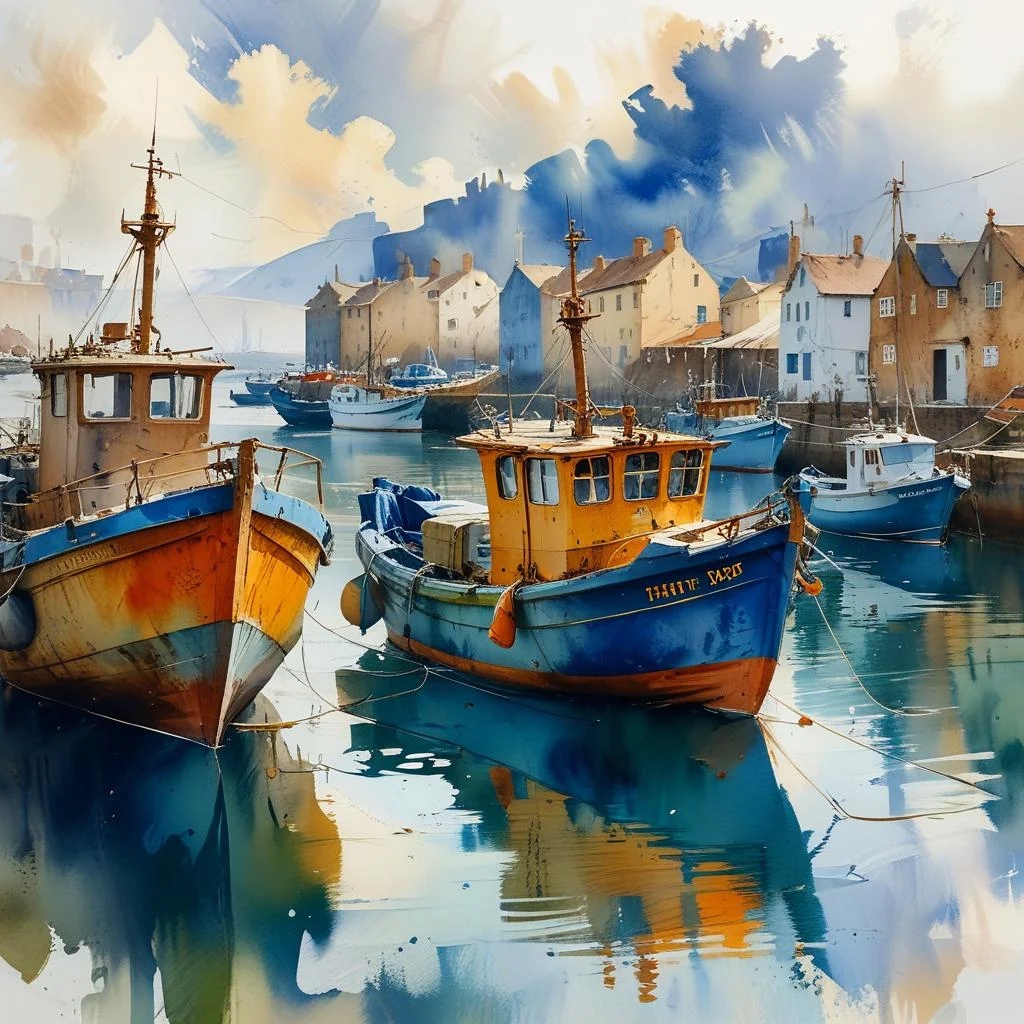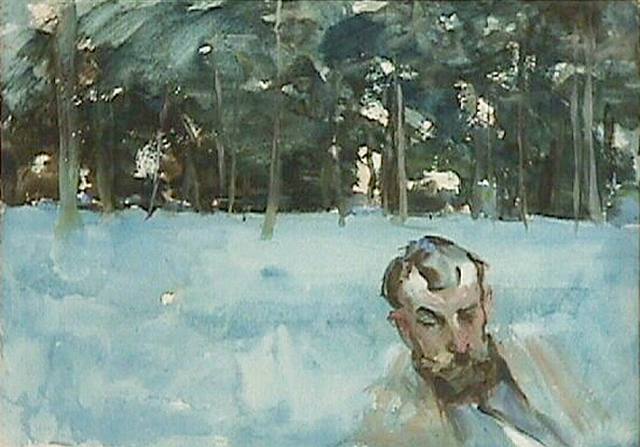Are you curious about Andrew Wyeth’s art but don’t know where to start? Do you wonder why his work resonates so deeply with people, even decades after his prime? Or maybe you’re simply intrigued by his name and want to understand what all the fuss is about. Whatever your reason, you’re in good company.
“I paint my life.”
This quote encapsulates Wyeth’s deeply personal approach to art, where his works often reflect his own experiences, emotions, and connections to the landscapes and people around him.
For many, Andrew Wyeth is a name that comes with a lot of baggage – some good, some confusing. His work is often described as haunting, nostalgic, or even melancholic. But what makes his art stand out in a crowded field of American painters? And how can you, as a beginner, appreciate his contributions without getting lost in the noise?
In this guide, we’ll dive deep into Andrew Wyeth’s life and art, offering you a straightforward, engaging introduction to one of America’s most beloved painters. By the end, you’ll not only understand why his work is so significant but also feel more confident in discussing it with others. Let’s get started.
Who Was Andrew Wyeth?
Andrew Wyeth (1917-2009) is often referred to as one of the most significant American painters of the 20th century. Born in Chadds Ford, Pennsylvania, Wyeth was the youngest of five children in a creative family. His father, N.C. Wyeth, was a successful illustrator, best known for his illustrations for classic novels like Treasure Island and Robin Hood.
Andrew was home-schooled due to his fragile health, which gave him ample time to explore his artistic interests under his father’s tutelage. By the time he was in his teens, Andrew had already developed a keen eye for detail and a preference for realistic depictions – a style that would define his career.
The Wyeth Family Legacy
It’s impossible to talk about Andrew Wyeth without mentioning the broader Wyeth family. The Wyeths are often seen as an American art dynasty, with multiple generations contributing to the arts in various forms. Andrew’s son, Jamie Wyeth, is also a well-known artist, continuing the family tradition of realism.
The Wyeths are often characterized by their connection to the landscapes and people of rural America, particularly in Pennsylvania and Maine. This deep-rooted connection to place and community is a hallmark of their work and offers a sense of continuity across generations.
The Art of Andrew Wyeth: Realism with a Twist
When people first encounter Wyeth’s work, they often describe it as “realistic.” But there’s more to it than meets the eye. Wyeth’s realism is imbued with an emotional depth that elevates it beyond mere representation. His paintings often feature lonely, desolate landscapes or solitary figures, evoking a sense of isolation and introspection.
Why Realism?
Wyeth’s choice of realism was, in many ways, a reaction against the dominant art movements of his time. While abstract expressionism and modernism were gaining popularity, Wyeth stayed true to a more traditional style. He once said, “I paint my life,” which is evident in his deeply personal work.
Unlike his contemporaries, who were experimenting with abstraction, Wyeth used his realistic style to explore complex emotional landscapes. His paintings are not just depictions of rural America; they are meditations on themes like loneliness, time, and memory.

The “Christina’s World” Phenomenon
One of Wyeth’s most famous works, Christina’s World (1948), is a perfect example of this emotional realism. The painting shows a young woman, Christina Olson, lying in a field, looking up at a distant farmhouse. On the surface, it’s a simple rural scene, but there’s a haunting quality to it.
Christina was actually a neighbor of Wyeth’s in Maine, and she suffered from a muscular disorder that made it difficult for her to walk. The painting captures her determination and longing, as she seems to crawl toward the house. It’s a powerful image that speaks to human resilience and the quiet struggles we all face.
The Helga Testorf Series
Another significant chapter in Wyeth’s career is the Helga Testorf series, a collection of over 240 works created between 1971 and 1985. Helga was Wyeth’s neighbor and muse, and the series remained a well-kept secret until it was revealed in 1986. The works include drawings, watercolors, and tempera paintings, all featuring Helga in various poses, often nude.
The series caused quite a stir when it was unveiled, partly because of its secrecy and partly because of the intimate nature of the works. However, for Wyeth, Helga was simply another subject through which he could explore themes of solitude, beauty, and the passage of time.
How to Appreciate Wyeth’s Art
Understanding Wyeth’s art doesn’t require a degree in art history; it requires an open mind and a willingness to engage with the work on a personal level. Here are some tips to help you appreciate his art:
1. Start with the Details
Wyeth was meticulous in his attention to detail. Whether it’s the texture of a wooden floor, the play of light on a hillside, or the expression on a subject’s face, these details are key to understanding his work. Take your time to really look at the paintings and notice these subtleties.
2. Consider the Context
Many of Wyeth’s works are deeply rooted in specific locations—whether it’s the rolling hills of Pennsylvania or the rugged coast of Maine. Understanding the context in which these paintings were created can add layers of meaning. For example, knowing that Christina’s World was painted in rural Maine, where Wyeth spent his summers, gives you insight into the connection he felt to the landscape.
3. Look Beyond the Surface
At first glance, Wyeth’s paintings might seem straightforward, but they often contain hidden depths. For example, the stark, empty rooms in his interiors can be seen as metaphors for the human condition—suggesting feelings of emptiness, longing, or introspection. Try to think about what the painting might be saying beyond its literal depiction.
4. Explore the Themes
Wyeth’s work often explores recurring themes like solitude, memory, and the passage of time. These are universal themes that resonate with many people, which might explain why his work continues to be popular. As you look at his paintings, think about how these themes are expressed and how they connect to your own experiences.
5. Visit a Museum or Gallery
Seeing Wyeth’s work in person can be a revelation. While reproductions are great, they can’t capture the full texture and detail of his paintings. If you have the opportunity, visit a museum or gallery that has his work on display.
| Title | Year | Gallery | Description |
|---|---|---|---|
| Christina’s World | 1948 | Museum of Modern Art, New York | This iconic painting depicts Christina Olson, a woman with polio, crawling through a field towards her family home, embodying themes of longing and isolation. |
| Braids | 1979 | Brandywine River Museum of Art | A portrait of a young girl with intricate braids, showcasing Wyeth’s ability to capture the innocence and beauty of childhood through delicate detail. |
| The Helga Pictures | 1971-1985 | Various collections | A series of over 200 paintings and drawings of Helga Testorf, Wyeth’s neighbor, featuring intimate portraits that explore themes of beauty and vulnerability. |
| Winter 1946 | 1946 | National Gallery of Art, Washington, D.C. | This work captures a stark winter landscape, reflecting Wyeth’s mastery of light and shadow, conveying a sense of solitude and contemplation. |
| Kuerner’s Farm | 1943 | Brandywine River Museum of Art | A depiction of the Kuerner Farm, a recurring subject in Wyeth’s work, illustrating the rural life and the connection between the land and its inhabitants. |
| The Mill | 1960 | Private Collection | This painting features an old mill, showcasing Wyeth’s detailed approach to architecture and landscape, evoking a sense of nostalgia and history. |
| The Toll Rope | 1967 | Various collections | A haunting image of a young woman standing by a toll rope, symbolizing transition and the passage of time, rendered with Wyeth’s characteristic realism. |
| Walking in Her Cape Coat | 1979 | Private Collection | This work portrays a woman in a flowing cape, capturing the movement and grace of the figure against a natural backdrop, emphasizing texture and color. |
The Controversy: Love Him or Hate Him?
Wyeth’s work has always been polarizing. Some critics have dismissed him as overly sentimental or even kitschy, while others praise him for his technical skill and emotional depth. This divide in opinion is partly why Wyeth remains such a fascinating figure in American art.
The Realism Debate
One of the main points of contention is Wyeth’s commitment to realism during a time when abstract and modern art were dominant. Some critics felt that his work was regressive, clinging to outdated modes of representation. However, his fans argue that Wyeth’s realism is anything but traditional—it’s a deeply personal and expressive form of art that transcends simple categorization.
The Helga Affair
The revelation of the Helga Testorf series also sparked controversy. Some saw it as a voyeuristic project, while others viewed it as a profound exploration of human beauty and mortality. The fact that Wyeth kept the series secret for so long only added to the intrigue.
Andrew Wyeth’s Legacy
Despite the controversies, Wyeth’s influence on American art is undeniable. His work continues to be celebrated in major exhibitions and is held in prestigious collections around the world. Moreover, his impact on popular culture is significant; references to his work appear in everything from books to films.
A Family Tradition
The Wyeth family’s artistic legacy continues through Andrew’s son, Jamie Wyeth, who has carved out his own successful career. Like his father, Jamie is known for his detailed, realistic paintings, though his work often has a more whimsical, surreal quality.
Wyeth in Popular Culture
Wyeth’s work has left an indelible mark on American culture. Christina’s World, for example, has been referenced in films, music, and literature. The painting’s haunting imagery has inspired countless artists and continues to captivate audiences.
Conclusion: Why Andrew Wyeth Matters
In a world that often feels chaotic and fragmented, Andrew Wyeth’s art offers a moment of stillness. His paintings invite us to pause, reflect, and connect with the deeper currents of our own lives. Whether you’re drawn to his technical skill, his emotional depth, or his ability to capture the essence of a place, Wyeth’s work has something to offer everyone.
So the next time you see a Wyeth painting, take a moment to really look at it. Consider the details, the context, and the themes, and allow yourself to be drawn into the quiet, contemplative world he created. You might just find that his work speaks to you in ways you never expected.



